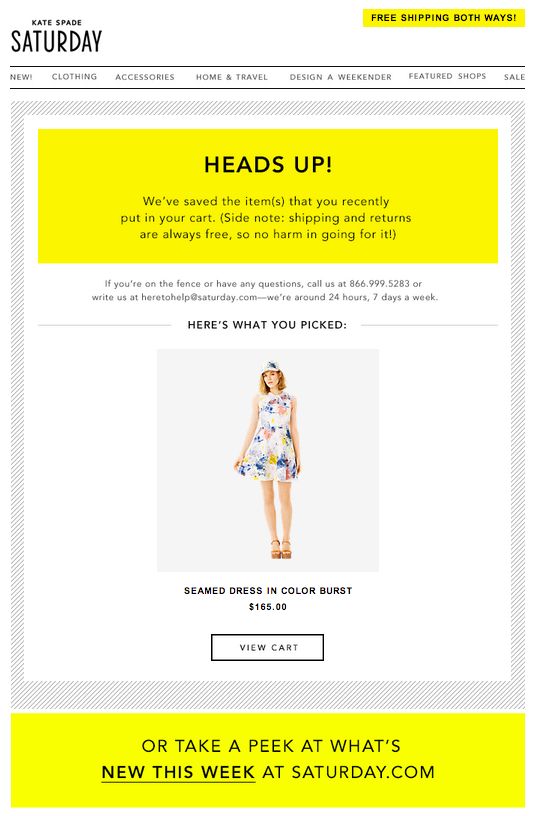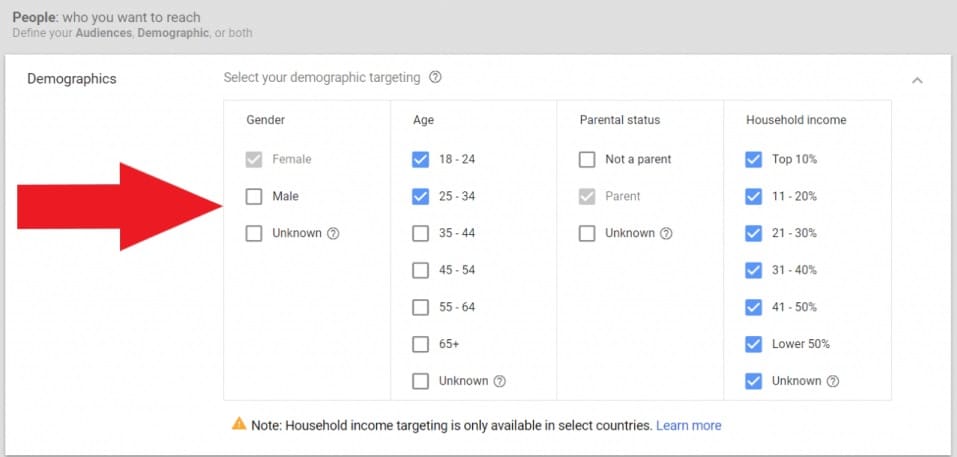Article first published in November 2017, updated June 2019
Imagine a world where you could sell a product to a consumer who’s looking to buy exactly what you sell.
If such a world existed, it’d represent the holy grail of marketing. Instead of spending money on expensive advertising campaigns, marketers would simply find who needs what they have to sell, and they would sell it to them.
Unfortunately, such a world doesn’t exist. However, there’s a marketing technique that has allowed marketers to create better-targeted, more effective messages that are very likely to resonate with prospects and customers.
The technique is called behavioral marketing and, in this article, we’ll show you what it is and why you should consider using it in your marketing campaigns.
What is behavioral marketing?
is marketing that’s based on the actual behavior of your audience. You can use website activity, purchase activity, and activities from third-party applications to tap into how your customers are engaging with your brand.
Online marketers are lucky—you can track and measure what consumers do from the first moment they visit your website up to the point of purchase. With the help of tools such as web analytics, heat maps, and user recordings, you can uncover vast amounts of insights from the actual behavior of your consumers, which you can then use in your marketing campaigns.
In other words, you take all the information you have from your users and use it to build a more realistic profile of them, which you can use to tailor your marketing messages better.
Behavioral segmentation
Behavioral segmentation is considered a more focused form of marketing segmentation. This form of segmentation groups of consumers into smaller groups based on specific behavioral patterns displayed during their online searching and purchasing choices. Segmentations can be based on varying factors, including:
- User interests
- Engagement-level
- Customer satisfaction
- Customer journey stage
- Purchasing behavior
- Frequently searched items
Behavioral marketing works because users receive messages tailored to them. In a world where 50% of people feel they receive too many emails, these personalized campaigns make a difference.
According to Invesp, 53% of online shoppers think personalization is valuable, 45% prefer shopping with stores that give personalized recommendations, and 57% wouldn’t mind giving their personal info if they benefited from it.
Behaviors to track
If you want to use behavioral marketing, you have to track what prospects, subscribers, and customers are doing. Here are some of the most common behaviors that marketers look at:
- Past purchases: You can use the past purchases of your customers to create better product recommendations, send them discounts, and other marketing messages to increase their loyalty.
- Device: You can adapt your marketing based on the device on which the user visits your website. If they come via tablet, you might send them tablet-friendly content, for example.
- Clicks: Where are your customers clicking? Which CTAs work for them? You can use this information to create more relevant messages.
- IP and location: Based on the location of the user, you can then create ads that “follow” them around the city they’re in, as well as ads that include the location in the creative.
The more specific the behavior and the more information you have at your disposal, the better. If you take the time on page—a broad and ambiguous site-wide metric—as your main behavior, it’ll be hard for you to make your marketing more effective. On the other hand, if you segment the people who opened your last five email campaigns as people who are engaged with your brand to send a special campaign with a discount, you can probably expect a positive response from your engaged subscribers.
How you can use behavioral marketing
Behavioral marketing is a strategy that encompasses many different tactics. Here are three tactics that show how behavioral marketing works. You can use them in your next marketing campaign.
1. Increase your e-commerce sales with email retargeting.
If you work for an e-commerce company, you know it’s common for people to leave products in their carts. In fact, the typical shopping cart abandonment rate for online retailers varies between 60% and 80%, with an average of 67.91%.
There are many reasons why that happens, but, with email retargeting, you can encourage those people to go back to your site to make the purchase. Whenever someone leaves a product in their shopping cart, you send them an email reminding them about it. You can even offer a discount to encourage them to act immediately.
According to AdRoll, retargeting emails have an average open rate of 60% and a click-through rate of 15%. That’s 3.5x better than the average open rate for the e-commerce industry in the US, and 6x times better than the average click-through rate.
Want to see retargeting in action? Kate Spade New York, the fashion design house, sends the following email to subscribers who add a product to their cart and then abandon it:

The way they structure the email is great; they start by catching the subscriber’s attention with the yellow header box. Then they reduce friction by adding a phone number to call for any questions. Plus, they show the product the subscriber left in the cart, reminding them of exactly what they like.
To get started with email retargeting, you can integrate your preferred email marketing tool, like Campaign Monitor, with a tool such as AdRoll.
2. Improve your marketing with personalized content.
Your audience will get irritated if you send them irrelevant content. How do you send campaigns your subscribers actually want to see?
One way to improve the relevancy of your content is through personalization. With personalization, you can send the right content to the right audience at exactly the right time.
According to a Forrester Total Economic Impact™ Study, when retailers add content personalization to their event-triggered campaigns, they see a 667% ROI.
Marketers can personalize campaigns using data about a subscriber’s:
- Gender
- Location
- Income level
- Past purchases
Average order value from previous purchases
For example, On, a Swiss running shoe company used behavioral marketing to target subscribers based on their location, content preferences, shoe usage, and past purchases.

After a customer makes a purchase, On asks customers what kind of runner they are and how many miles they usually run. With this data, On can then send the customer reminders about when they should shop for their next running shoe, as well as targeted offers about relevant products.
On also sends different campaigns based on the language of the user. Instead of asking for their location, they segment their customers based on the billing country (for customers) and on their IP Address (for non-customers).
3. Lift your revenue with suggested products.
According to the identity management software provider Janrain, 74% of customers are becoming increasingly frustrated when they receive marketing content that falls outside their interests. Focusing on individual shoppers rather than mass segmentation can let companies send product recommendations that drive purchases.
The use of technologies like machine learning and artificial intelligence allows marketers to use behavioral marketing as a way to trigger email marketing campaigns based on a shopper’s past and present brand interactions. That is, a retailer can use the insights taken from past campaigns to show shoppers unique product combinations that take into consideration purchasing trends from other people.
For example, JD Sports, the owner of the sites Millets.co.uk and Blacks.co.uk, tested out personalized product recommendations to see if they’d generate more revenue.
They recommended products based on the intent and preferences of each visitor. JD Sports gained this info from the page types they visited and the specific product categories they interacted with. They used three types of personalization:
- “What customers ultimately buy” recommendation
- Rule-based cross-sell personalized recommendation
- Auto-generated product recommendations

The results showed a 10% increase in conversion rates when the recommendations were shown against the default options that were previously used. Also, conversion rates increased by 332% on Millets.co.uk and 277% on Blacks.co.uk when a visitor selected a personalized product recommendation.
What’s more, a large part of the sites’ revenue came from product recommendations: 19% at Millets and 16.9% at Blacks. Finally, the use of personalization technology brought an ROI of £291.70.
Contextual and behavioral targeting
While the information we’ve covered so far pertains to email marketing, contextual and behavioral targeting are both worth testing in your digital marketing strategy, and here’s why.
What is contextual targeting?
In digital marketing, contextual targeting is the practice of displaying ads on a website that are relevant to its content. Think about a website that you’ve recently visited—perhaps it was a fitness website. Do you remember seeing ads placed around the website? Chances are these ads were fitness related, such as fitness equipment or a weight loss supplement.
Source: Fitness Magazine
In this example, the ads to the right of the blog include links to other relevant articles from around the web, including recipes and health solutions.
These ads are placed in this piece because the topic of the blog is “Green Drink,” which are popular health drinks that many fitness guru’s believe help in weight loss and gut health. So it would make sense to see an article on “10 healthiest foods for breakfast,” and an article on age-related macular degeneration.
What is behavioral targeting?
Behavioral targeting, much like behavioral marketing, targets website users based on their past behaviors, such as purchase history, search history, and so on. This is done with the use of user segmentation, which can then help create highly personalized ads for your brand’s audience.
Source: Walmart
This example from Walmart is excellent because it shows the use of both contextual targeting and behavioral targeting. The “customers also viewed” section is a classic section of behavioral targeting, while the “sponsored products” is heavily influenced by the page content, which was a search on Father’s Day gifts under “sports/outdoors.”
Behavioral marketing trends in 2019
Marketing trends are ever-changing, and, while the behavioral marketing trends mentioned above are still relevant, 2019 has continued to highlight popular and effective methods that seem to have fallen out of favor with some marketers, while also giving special attention to a few new trends.
1. Demographic targeting
Demographic targeting is the process of targeting users based on specific demographics, such as age, gender, household income, and more.
Targeting helps marketing teams to create material that’s more relevant to viewers and subscribers. While a specific user’s demographic isn’t necessarily a “behavior,” marketing teams can use this information to see who frequents what material. The “who is visiting” is the behavior being tracked here. This will help marketers better prepare content for those who are frequenting their site the most.
Source: CPC Strategy
2. Leveraging cross-selling and upselling
This is a classic behavioral marketing method that’s becoming popular once again, as more people are turning to the internet for researching a purchasing product. Sites like Spotify, Amazon, and Walmart all track what users listen to or purchase and offer up suggestions of similar items that may be of interest to them. This can most often be found under the label “customers also bought” and helps curate options for future users.
Source: Amazon
3. Social media retargeting ads
Retargeting ads aren’t exactly new. However, with the popularity of social media, more and more brands are creating retargeting ads that appear on these popular social pages to help bring previous readers or viewers back to their site. When done right, the ad will pertain to something the viewer was specifically looking at, and offer them something of value to get them to return.
Source: Facebook
Wrap up
Behavioral marketing represents a new way to carry out your marketing strategy. By taking the behaviors of your visitors and customers, you can offer more relevant content that encourages them to make purchases.
You’ve seen how powerful behavioral marketing works, how to use it, and how powerful it can be. Now it’s time you get started. Picking one of the tactics shown in this article can help you start making your marketing more relevant. Another way to do so is fine-tuning your list segmentation skills.
Check out how using list segmentation can not only make your content more relevant to your readers, but how it can also help boost overall engagement.










